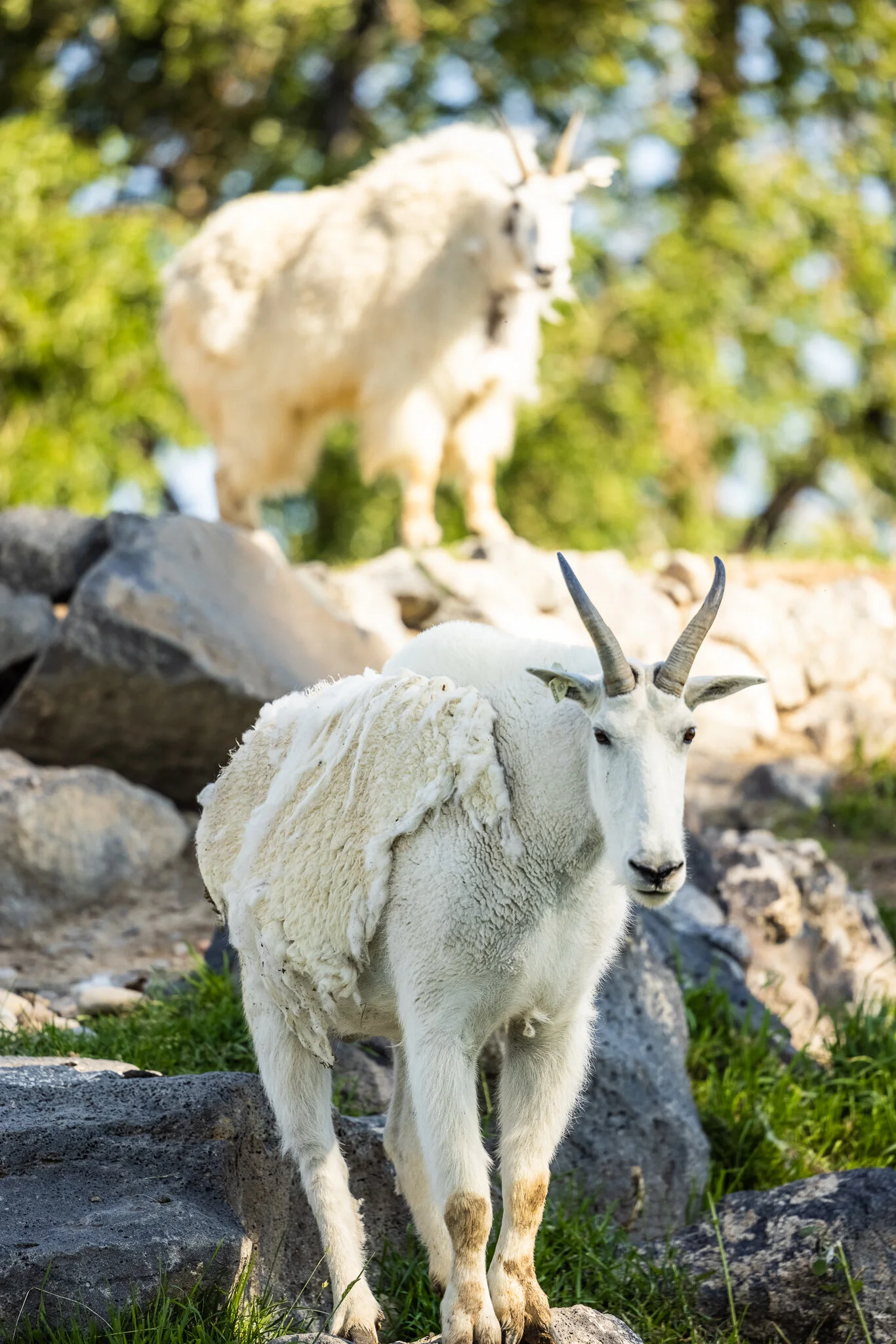Wildlife of Yellowstone Bear World
Meet the Wildlife of YBW
Black Bear
Scientific Name: Ursus americanus
Description:
Breeding:
Diet:
Range:
Interesting Facts:
- The black bear’s walk is clumsy, but in its bounding trot it attains surprising speed, with burst up to 30 mph.
- Hibernate in the harshest months of winter.
- Mainly solitary, except briefly during the mating season and when congregating to feed.
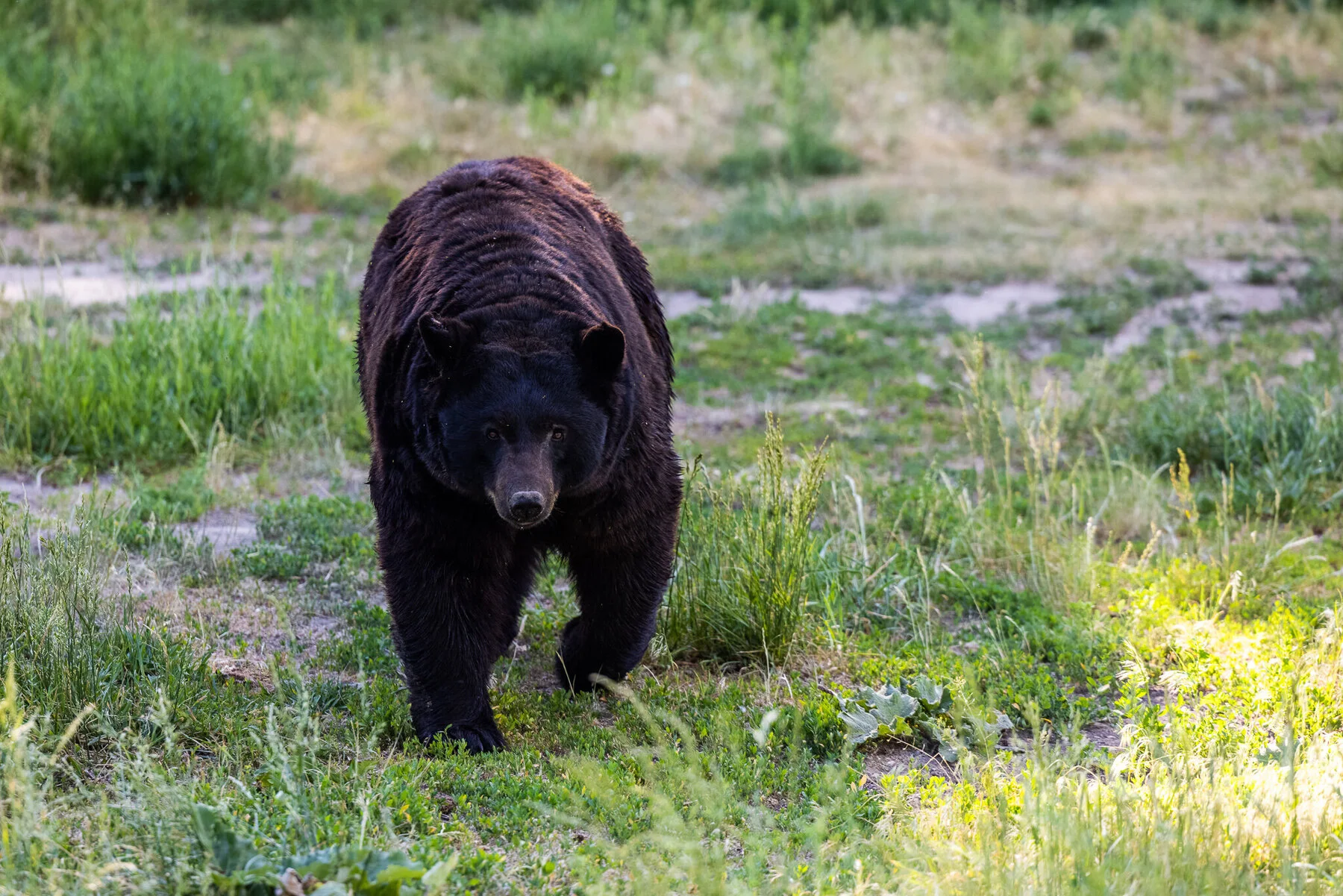
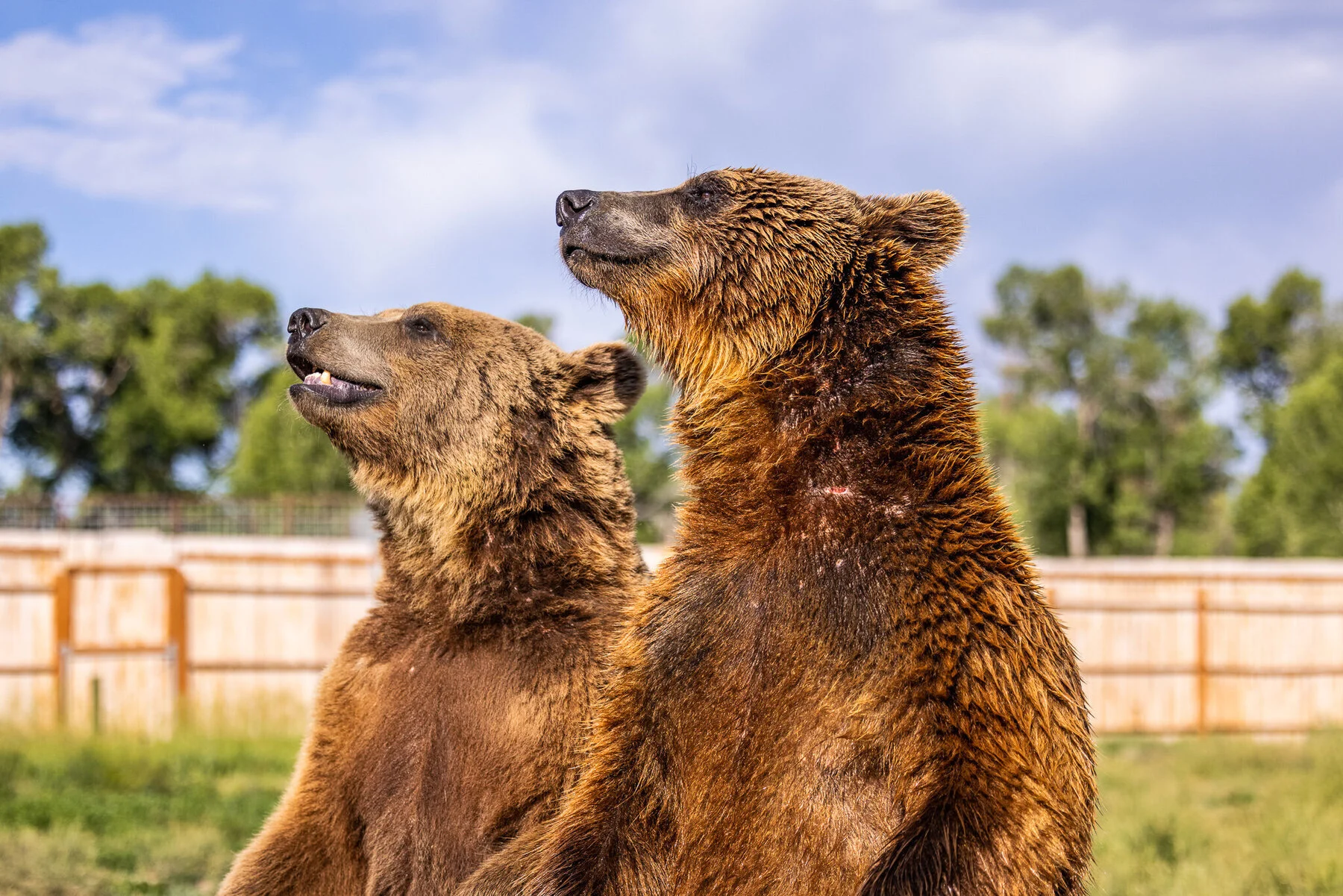
Grizzly Bear
Scientific Name: Ursus arctos “Brown Bear”
Description:
Breeding:
Diet:
Range:
Interesting Facts:
A Grizzly in captivity has lived 47 years, but the life span in the wild is 15 – 34 years.
Moves with a low, clumsy walk, swinging its head back and forth, but when necessary it can lope as fast as a horse. Normally solitary, they establish dominance through size and threats, spacing themselves out, with the largest, most aggressive individuals taking the choicest stations. Grizzly cubs can climb, though not as nimbly as black bear cubs, but they loose their climbing ability during their first year. In winter, grizzlies put on a layer of fat, as much as 400 pounds.
Rocky Mountain Elk
Scientific Name: Cervus elaphus or Cervus canadensis Also called “Wapiti”
Description:
Breeding:
Diet:
Range:
Interesting Facts:
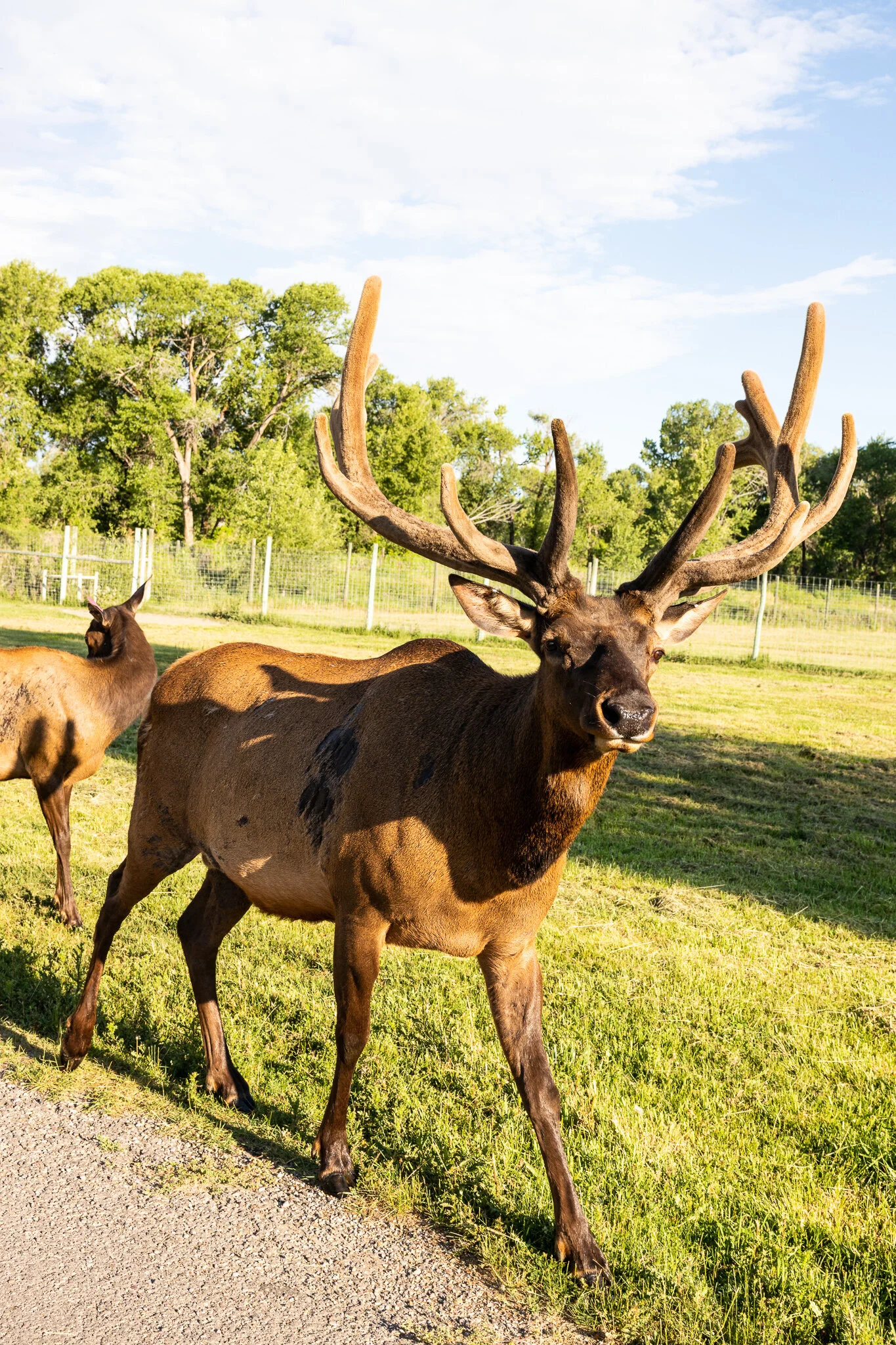
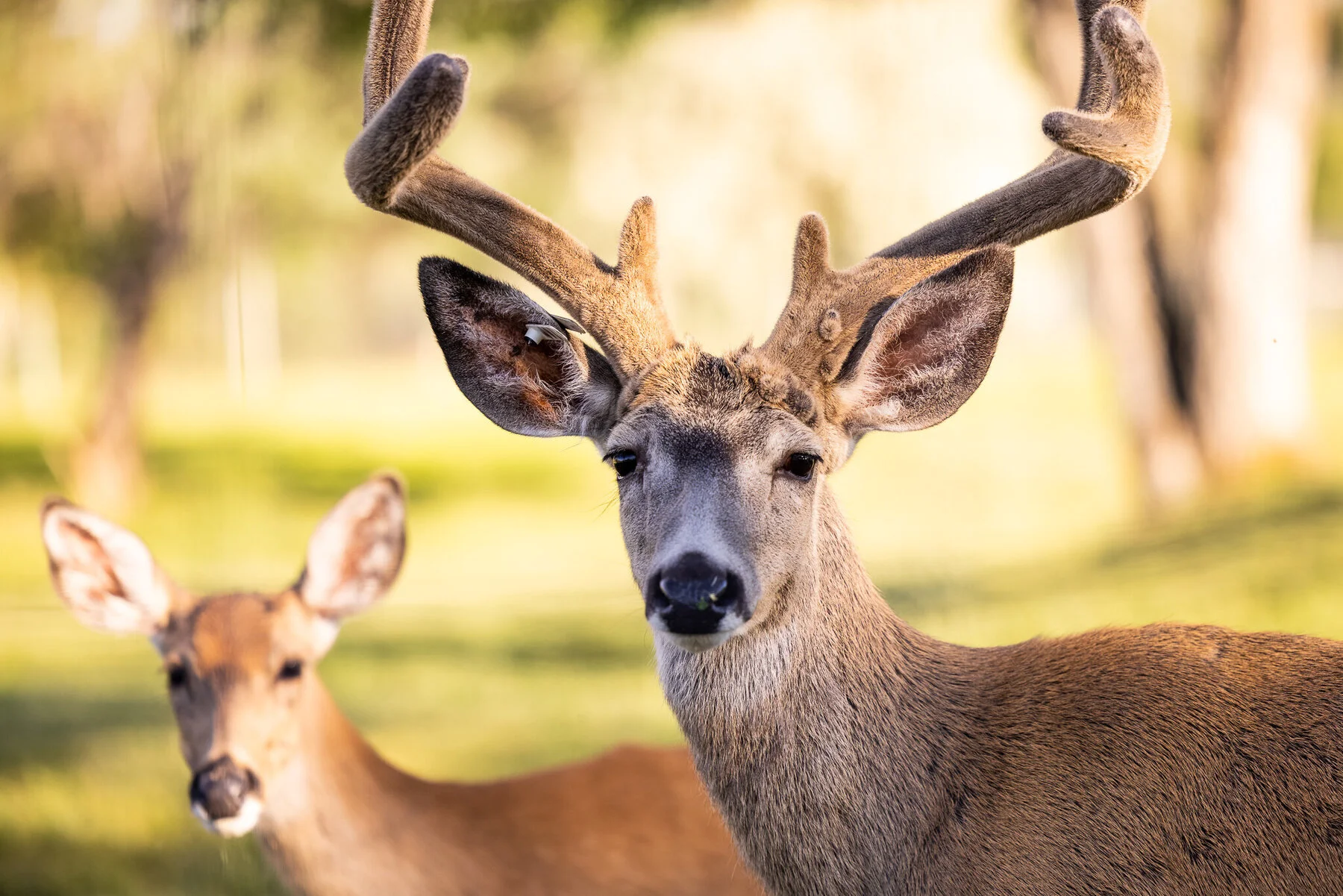
Mule Deer
Scientific Name: Odocoileous hemionus “Black-tailed Deer”
Description:
Breeding:
Diet:
Range:
Interesting Facts:
White-tail Deer
Scientific name: Odocoileus virginianus “Whitetail” “Virginia Deer”
Description:
Breeding:
Mates October – December 1 – 2 fawns born June – July
Diet:
Range:
Interesting Facts:

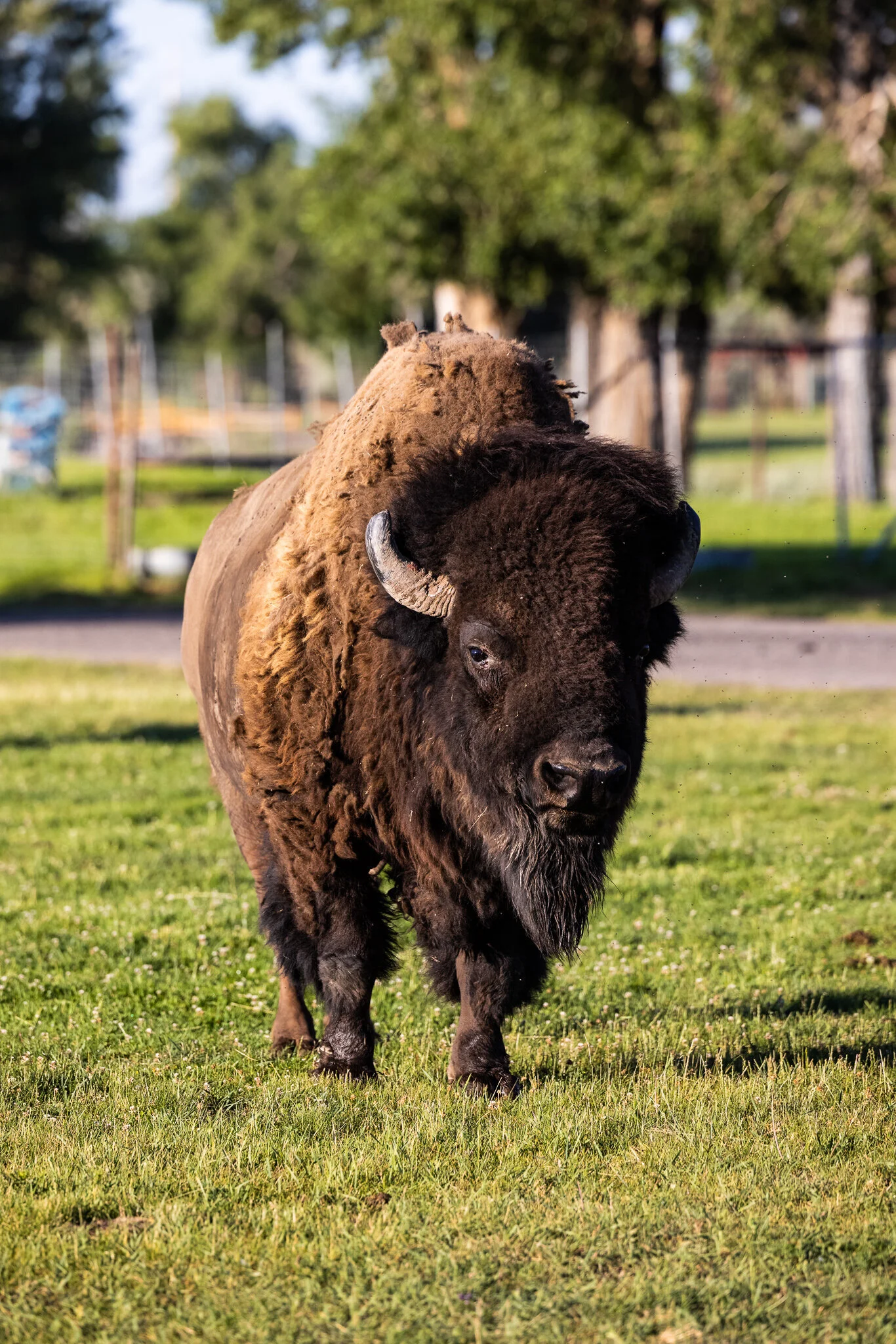
American Bison
Scientific name: Bos bison
Description:
Breeding:
Diet:
Range:
Interesting Facts:
A good swimmer, it is so buoyant that head, hump and tail remain above water.
American Bison will stampede if frightened, galloping at speeds up to 32 mph. When butting, males walk to within 20 ft. of each other, lower their heads , raise their tails, and charge. Their massive foreheads, including much hair but not the horns , collide without apparent injury; they charge repeatedly until one animal gives up.
Mountain Goat
Scientific Name: Oreamnos americanus
Description:
Breeding:
Interesting Facts:
